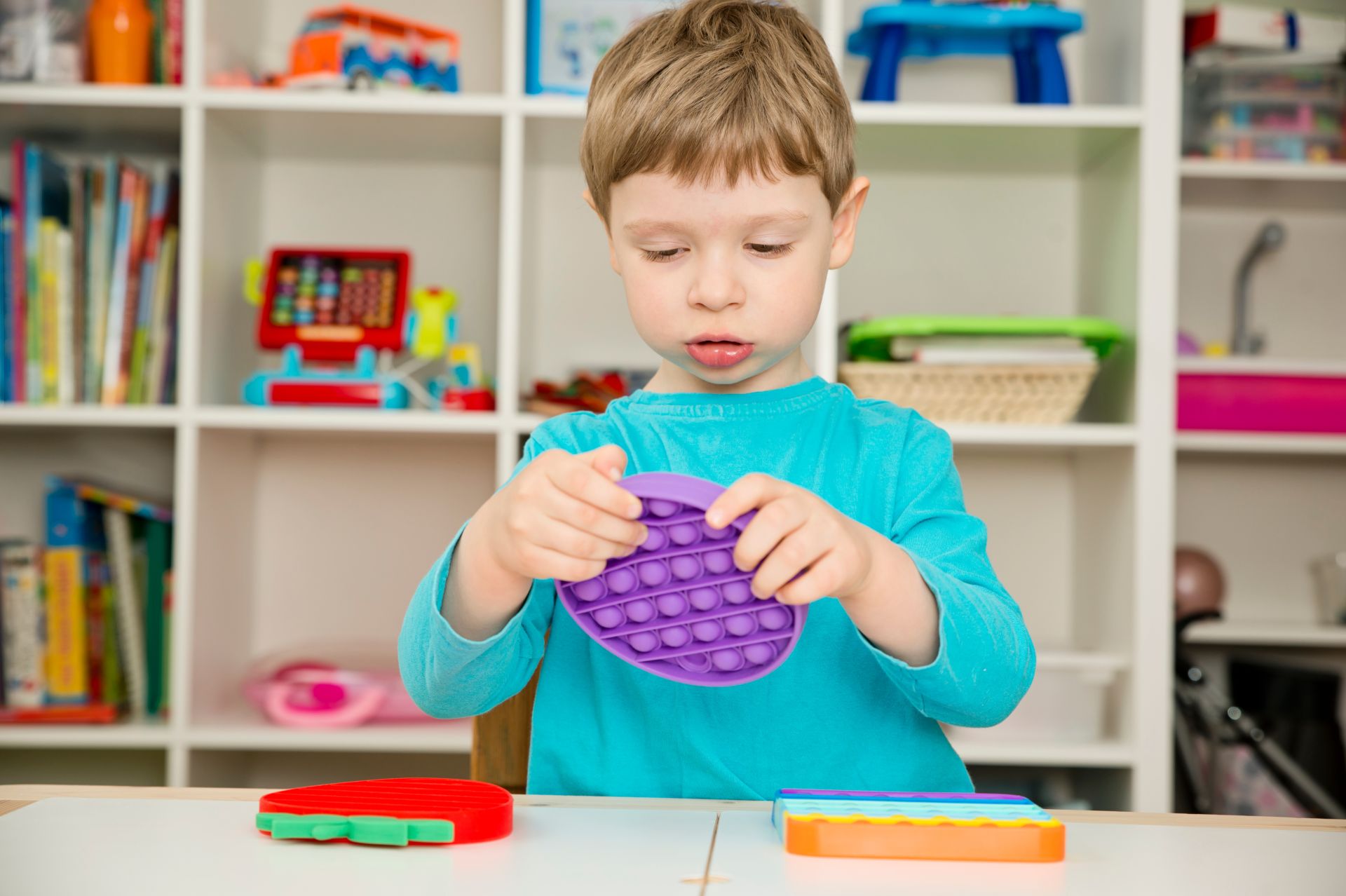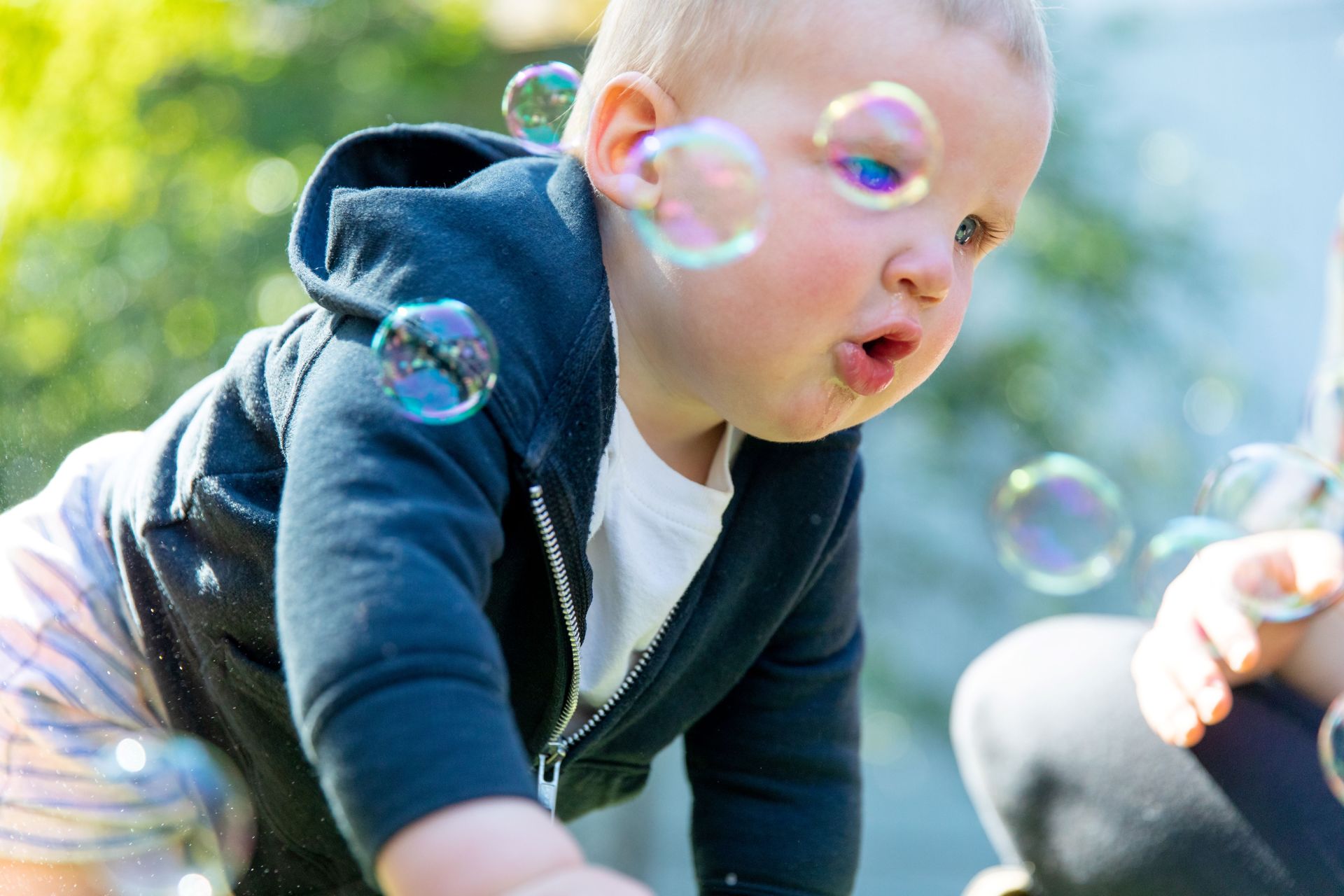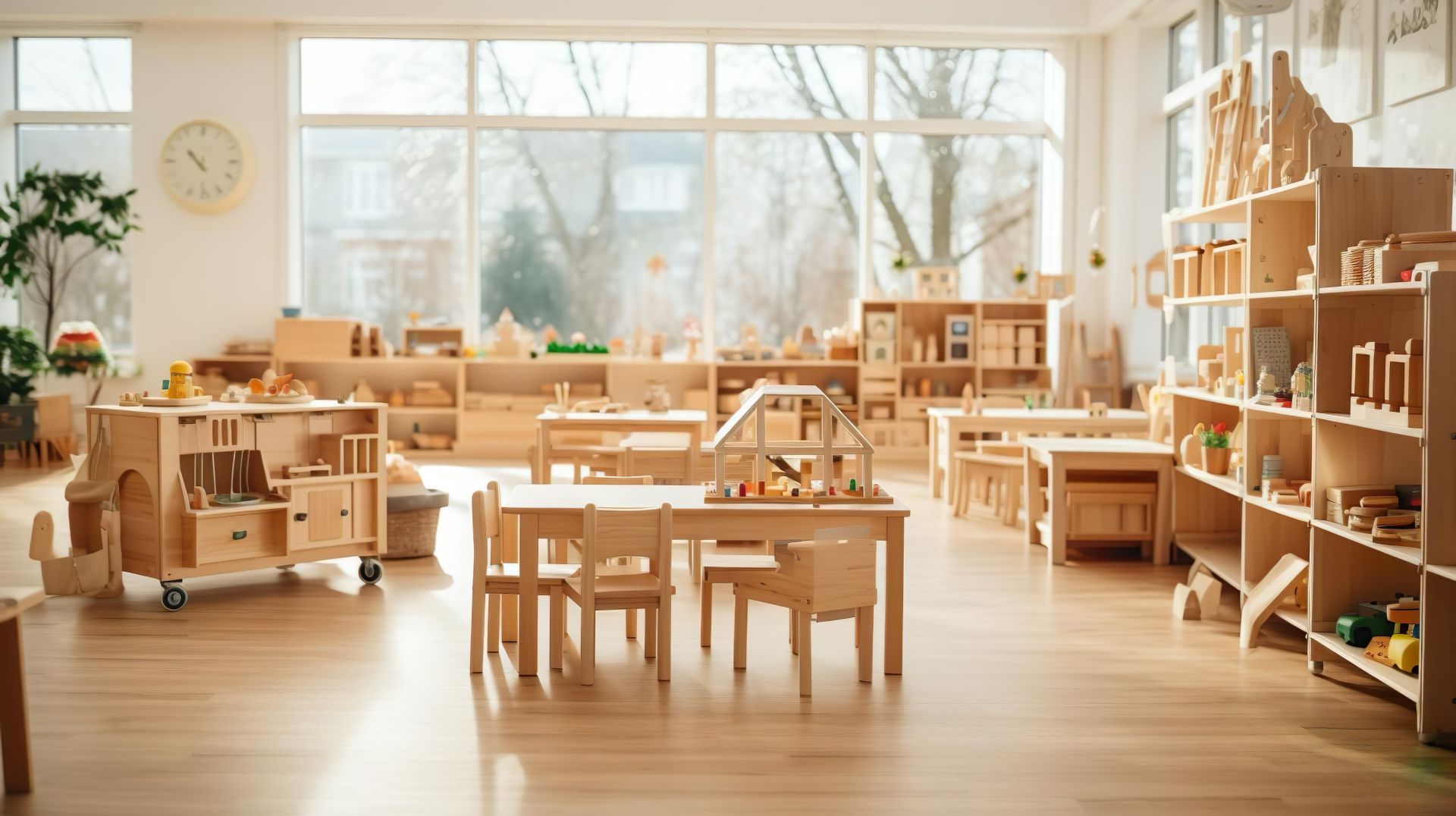Understanding Sensory Seeking and Sensory Avoiding Behaviors
A Guide for Early Childhood Educators
How Sensory Processing Shapes Learning and Behavior
Learning is a sensory experience—children absorb information by seeing, hearing, touching, and moving. As early childhood educators, we know that young children experience and interact with the world through their senses. But did you know that how a child processes sensory input can impact their ability to learn, self-regulate, and engage in the classroom? Some children thrive in a bustling, noisy classroom, while others cover their ears at the sound of a loud voice or shy away from certain textures. When a child’s sensory needs are met, they are better able to focus, follow directions, and participate in activities. However, when sensory input is overwhelming or too limited, it can interfere with attention, emotional regulation, and social interactions. Understanding sensory processing—especially sensory seeking and sensory avoiding behaviors—can help us create inclusive classroom environments that support all children’s self-regulation and learning. If you’re interested in learning more, read on! And check out our on-demand training, Sensory Strategies and the Brain: Promoting Self-Regulation and Learning.
Understanding Sensory Seeking and Sensory Avoiding Behaviors
Everyone has different sensory preferences. Some children seek out intense sensory experiences, while others become overwhelmed and try to avoid them. By recognizing these behaviors, we can adapt our classrooms to meet the diverse sensory needs of all children, promoting a more inclusive and supportive learning environment.
Sensory Avoiding: Some children become overwhelmed by too much sensory input and may try to withdraw. They might:
Sensory Avoiding: Some children become overwhelmed by too much sensory input and may try to withdraw. They might:
-
Cover their ears or eyes in noisy or bright environments
-
Avoid certain textures in food or play materials
-
Resist being touched
-
Become distressed in crowded or unpredictable settings
-
Show strong reactions to smells or loud sounds
Children who are sensory avoiding may become anxious, withdrawn, or even exhibit challenging behaviors when overstimulated. Understanding these tendencies helps educators provide the right level of sensory input to keep children regulated and ready to learn.
Sensory Seeking: Some children crave sensory input and actively look for more sensory stimulation. You might notice them:
-
Constantly moving, jumping, or spinning
-
Touching everything and everyone
-
Making loud noises or humming
-
Craving strong smells, tastes, or deep pressure
-
Seeking rough-and-tumble play
Unfortunately, sensory seeking behaviors are often misunderstood as “behavior problems.” Children who are sensory seeking are not being disruptive on purpose; their brains are simply demanding more sensory input to stay engaged and focused. By reframing "behavior issues" as sensory needs, we create a more inclusive, supportive environment where all children can thrive. Instead of correcting or reprimanding a child, we can proactively provide strategies that allow sensory seekers to get the input they need in ways that work for the classroom. For example, a child who frequently gets out of their seat may benefit from active seating options or built-in movement breaks. A child who constantly touches objects or people may benefit from fidget tools or deep-pressure activities. When we address a child’s underlying sensory need, we help them stay engaged in learning while reducing frustration—for both the child and the teacher. With IMPACT’s Sensory Strategies & The Brain course, you’ll get a Sensory Matrix template that makes it simple to understand the sensory needs of the children you work with and identify strategies to support them.
Supporting Sensory Needs in the Early Learning Classroom

Creating a sensory-friendly classroom doesn’t require a complete overhaul—small, thoughtful adjustments can make a big impact. Understanding the unique needs of children who are sensory seeking or sensory avoiding allows educators to make intentional choices in their classroom design, routines, and teaching strategies.
Strategies to Support Sensory Seeking
Children who seek sensory input often need frequent opportunities to move, touch, and engage with their environment. Without these opportunities, they may struggle to focus or they may attempt to meet their sensory needs in ways that don’t work for the classroom. Providing intentional ways for sensory seekers to get the input they need can help improve their ability to self-regulate and engage in learning activities.
-
Provide movement breaks: Integrate movement into the daily routine with activities like jumping, stretching, yoga, or dancing. Scheduled "brain breaks" allow sensory seekers to move in a controlled and purposeful way.
-
Offer fidgets: Some children benefit from having a small object that they can hold in their hands and manipulate, allowing them to stay engaged in learning.
-
Incorporate sensory-rich activities: Activities like finger painting, water play, or kinetic sand offer satisfying sensory input while building fine motor skills.
-
Create opportunities for deep pressure (proprioceptive) input: Encouraging activities like pushing, pulling, lifting, or squeezing can help meet sensory needs. Consider using heavy work activities, such as carrying books or stacking chairs, as part of classroom jobs.



Strategies to Support Sensory Avoiding
Children who are sensory avoiding become overwhelmed by too much input, leading to withdrawal or distress. Creating a calm and predictable environment helps these children feel safe and ready to learn.



-
Designate quiet areas: Set up cozy corners or quiet spaces with soft pillows, dim lighting, and calming visuals where children can retreat when feeling overstimulated.
-
Adjust sensory input: Reduce loud sounds and excessive decorations to create a more soothing classroom environment. Using natural light or lamps with soft lighting instead of fluorescent lights can also help.
-
Prepare for transitions: Transitions can be particularly challenging for sensory avoiders. Using visual schedules or transition songs can help ease the shift from one activity to another.
-
Offer sensory tools: Providing noise-canceling headphones or sunglasses can help children regulate their responses to overwhelming sensory input.
If you’re interested in expanding the sensory activities you offer in your classroom, the on-demand course Beyond The Sensory Table: Classroom Strategies for Sensory Play is full of more fresh ideas. This course includes tons of information on how the senses develop in from infancy and across early childhood, and over 50 fun sensory activities to do with your class.
When we understand and embrace children’s sensory preferences, we take another step toward true inclusion. By thoughtfully integrating these strategies into the classroom, educators can create an environment where all children feel comfortable and ready to learn.
- NWC IMPACT Team
When we understand and embrace children’s sensory preferences, we take another step toward true inclusion. By thoughtfully integrating these strategies into the classroom, educators can create an environment where all children feel comfortable and ready to learn.
- NWC IMPACT Team
Never miss another blog post!
If you're interested in learning more about supporting children of all abilities in your classroom, check out these courses:
Check out our bundles for extra savings!
IMPACT™ content is developed by a multidisciplinary team and makes every effort to ensure that information provided reflect evidence-based, early childhood best practices. Providers should always follow local jurisdictions and other governing bodies rules and regulations when implementing any strategy or suggestion. Any actions, or lack of actions, are not the responsibility or liability of Northwest Center Kids – IMPACT™.
All content, including the presentation thereof on this web site, is the property of Northwest Center IMPACT™, and protected by U.S. and international copyright laws. You may not copy, reproduce, distribute, transmit, modify, create derivative works, or in any other way exploit any part of copyrighted material without the prior written permission from Northwest Center.
All content, including the presentation thereof on this web site, is the property of Northwest Center IMPACT™, and protected by U.S. and international copyright laws. You may not copy, reproduce, distribute, transmit, modify, create derivative works, or in any other way exploit any part of copyrighted material without the prior written permission from Northwest Center.
Connect
-
Seattle, WA
-
impact@nwcenter.org
-
NWC Home
Policy pages
Subscribe & stay up to date
Thank you!
Copyright © 2025
IMPACT™ content is developed by a multidisciplinary team and makes every effort to ensure that information provided reflect evidence-based, early childhood best practices. Providers should always follow local jurisdictions and other governing bodies rules and regulations when implementing any strategy or suggestion. Any actions, or lack of actions, are not the responsibility or liability of Northwest Center Kids – IMPACT™. All content, including the presentation thereof on this web site, is the property of Northwest Center IMPACT™, and protected by U.S. and international copyright laws. You may not copy, reproduce, distribute, transmit, modify, create derivative works, or in any other way exploit any part of copyrighted material without the prior written permission from Northwest Center.
